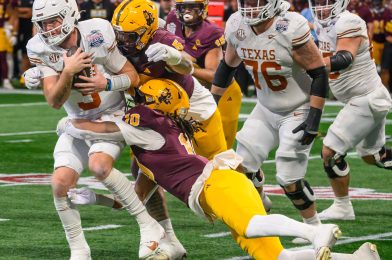When shooting photos for clients, my goal isn’t just to fulfill the immediate assignment and create a resource that serves them far beyond the event or project. I want to provide my clients with a photo library they can draw from repeatedly, saving them time and adding value to their branding efforts.
That mindset has led me to refine my approach over the years. Here’s how I’ve evolved my workflow and what you can learn if you create or curate visual assets for an organization.
Culling Down to the Best Images
I used to give clients all the acceptable images in the past, but that often resulted in an overwhelming number of similar shots. For example, if I captured 30-50 photos of a keynote speaker, that sheer volume wasn’t helpful—it was overkill.
Now, I focus on curating the most potent images, selecting a handful that best captures the moment. Typically, 5-10 images per speaker is an ideal range. These might include:
- A clear, engaging portrait of the speaker.
- Dynamic shots show gestures or expressions that emphasize their points.
- A contextual image with the audience to show interaction or scale.
- Close-ups of details like hands, props, or visuals on stage.
This curated approach gives clients variety without overwhelming them, ensuring they get the most impactful and polished images.
Shooting and Cropping for Impact
Another change I’ve made is shooting and cropping tighter. In the past, I left extra room in my shots to allow flexibility for editing or layouts, but I realized this sometimes resulted in images that didn’t feel finished or compelling.
Now, I aim to compose shots nearly ready for final use, with minimal cropping needed. This means:
- Focusing closely on expressions or actions that tell the story.
- Eliminating distractions in the background or frame.
- Considering verticals or horizontals based on likely usage (e.g., social media, presentations).
Tighter cropping immediately elevates the image’s visual appeal and saves clients extra editing time.
Tagging Key People for Better Usability
Metadata is another area where I add value. While I don’t tag every single person in group photos, I make sure to tag the key players, especially:
- Speakers and performers on stage.
- Members of an organization’s C-Suite or leadership team.
- VIPs like sponsors, special guests, or honorees.
This makes it easy for my clients to search their archives later and find exactly who or what they need. Efficient tagging transforms a simple collection of photos into a strategic asset.
Creating a Visual Story Beyond the Stage
Yesterday, I photographed the Chick-fil-A Peach Bowl, including the Fanfest before the game. My goal wasn’t just to document the event and create a dynamic photo library to serve Chick-fil-A’s storytelling needs.
From fans enjoying pregame activities to action-packed moments on the field, I aimed to provide a mix of images that capture the event’s spirit and connect with its brand values.
Takeaways for Clients and Creators
Whether you’re commissioning photography or creating visuals for your organization, think beyond the immediate needs of your project. Ask yourself:
- How can these images serve long-term marketing and branding goals?
- Am I curating a selection that tells the story clearly and efficiently?
- Are the images ready for immediate use, or will they need extensive edits?
- Can I improve searchability with thoughtful metadata?
These small but intentional steps can make a big difference in how your visuals support your organization’s mission over time.
Here are a few highlights from yesterday’s Chick-fil-A Peach Bowl to show this approach in action:
By thinking beyond the assignment, we turn every shoot into an opportunity to craft stories that endure.
Want to build a photo library that works as hard as you do? Let’s talk about how I can help.

